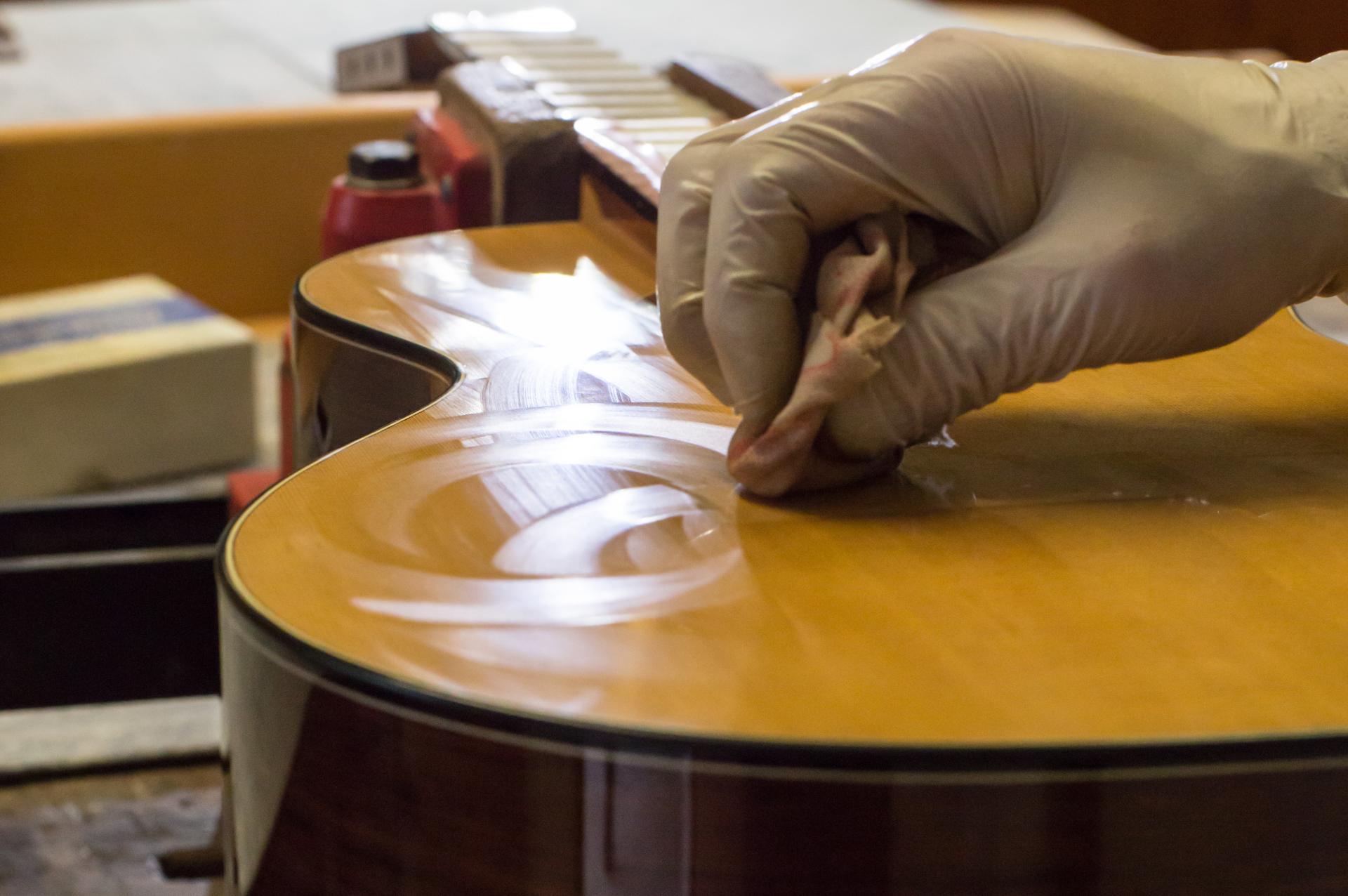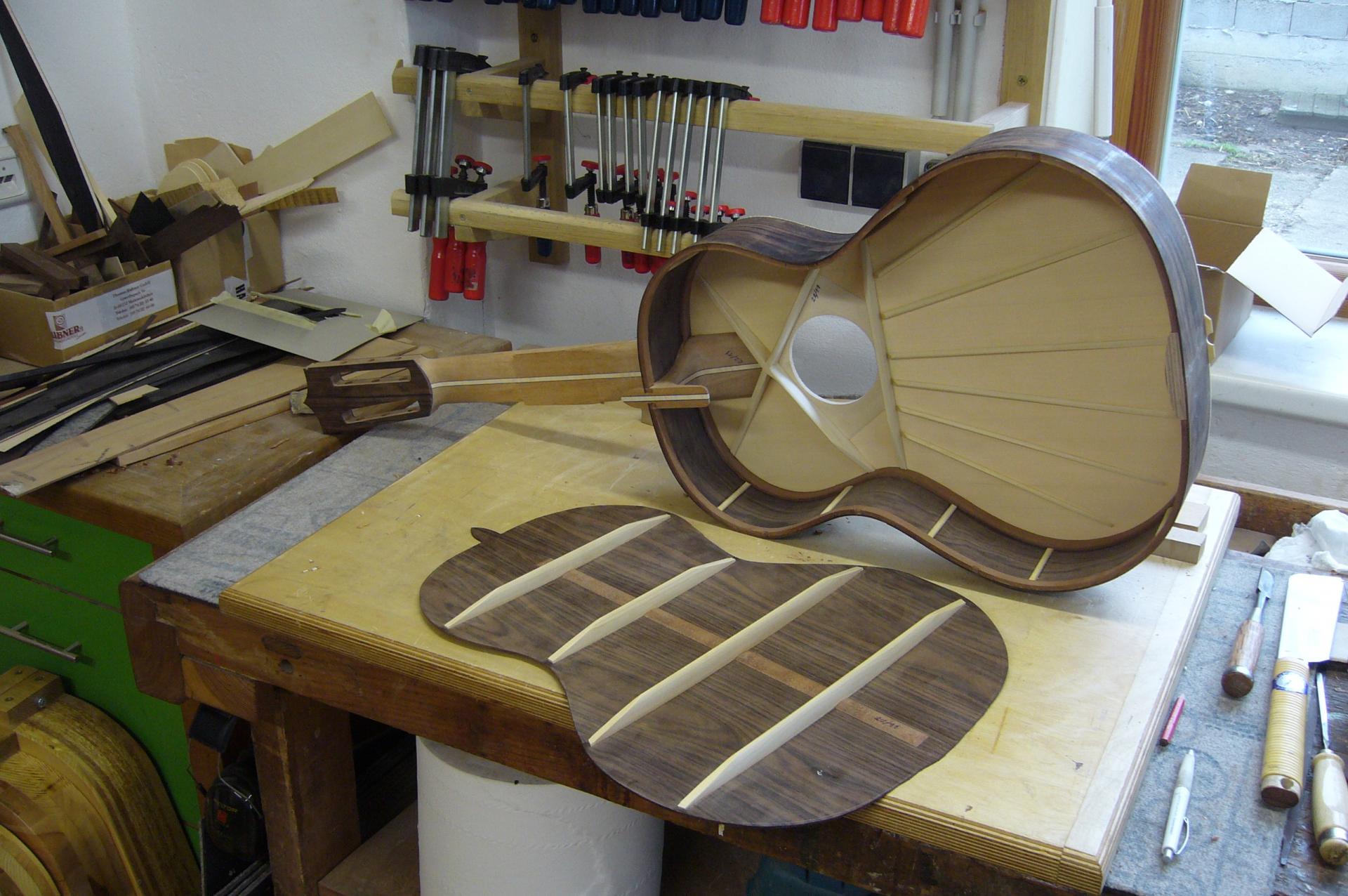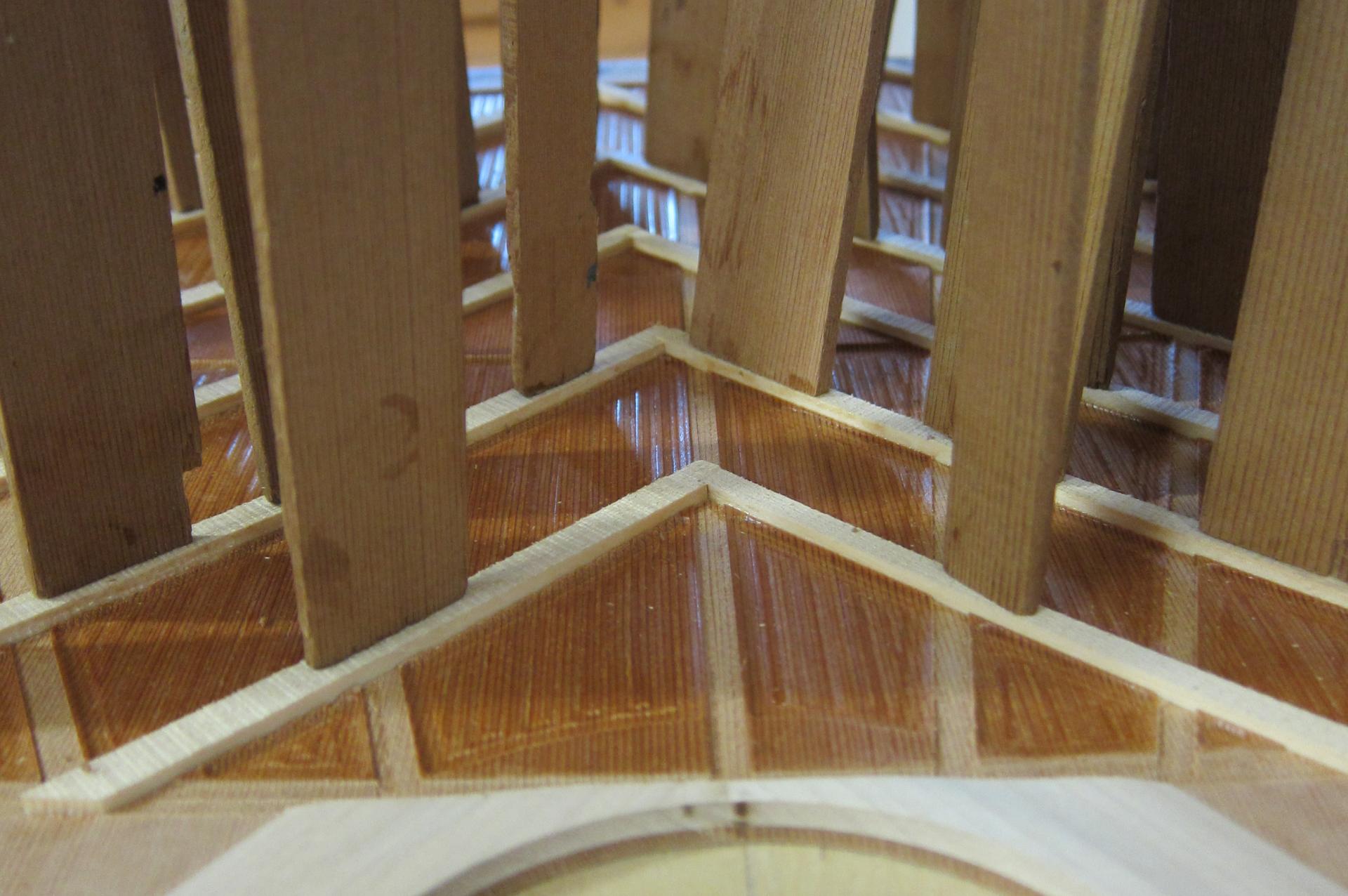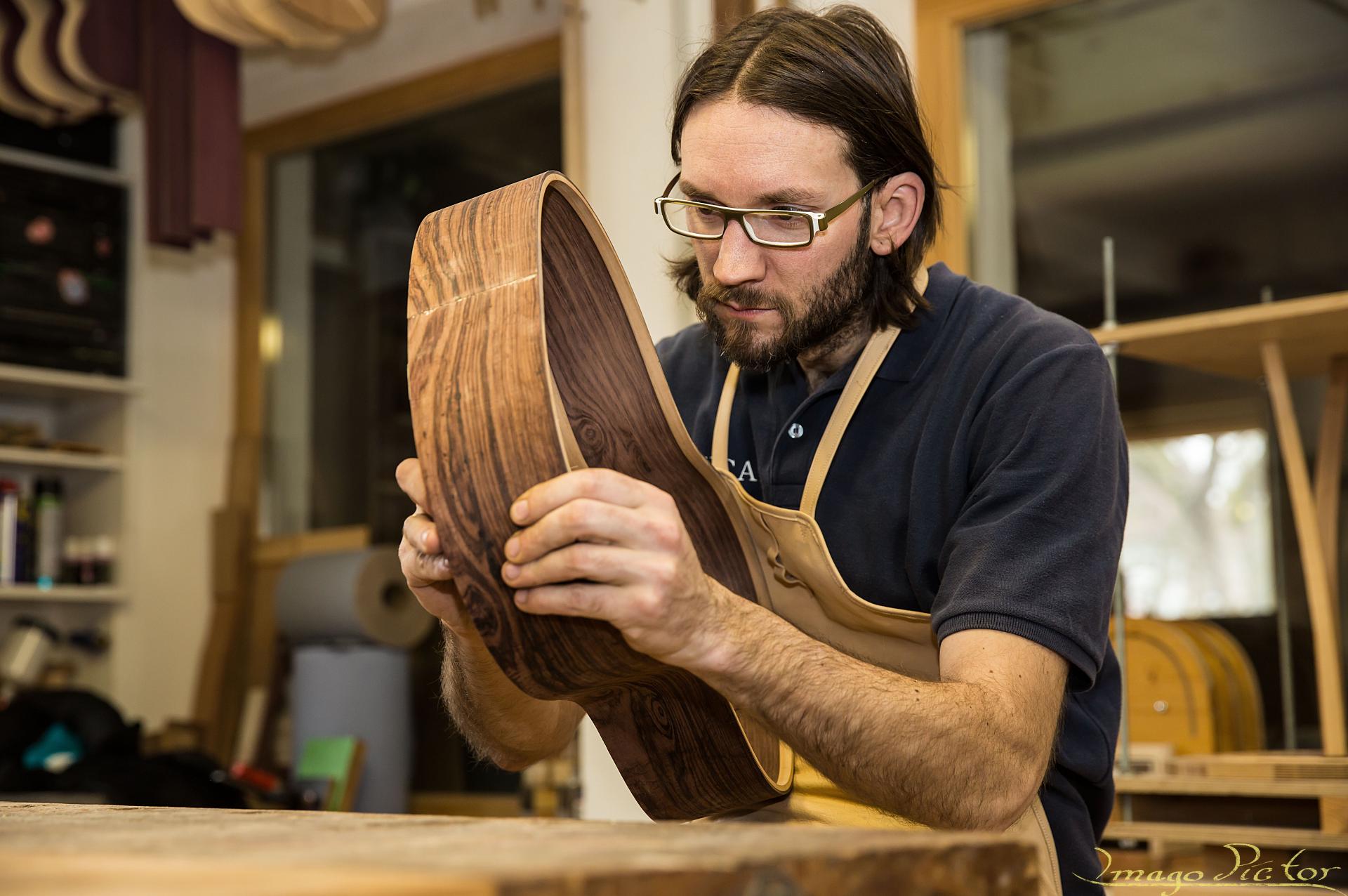Surface Treatment
There are several methods for treating the instruments's surface. I use these to finish my guitars... wax, open-pore matte lacquer, high gloss finish with nitrocellulose or polyester lacquer and shellac.
The material chosen will influence the sound of the guitar, and the amount of surface coating used is vital because wood changes its dimensions with the varying relative humidity. In order to withstand these movements, the surface treatment must be elastic. Last but not least, each type of surface treatment has a certain weight to it, and using too heavy a finish can make the soundboard sound dull.
Wax
In order to seal the pores of the wood to minimize any dirt getting into them, I prime the guitar, for example with shellac. Then I apply wax, which results in a beautiful, semi-gloss surface which can easily be touched up. This is the most minimalist finish I offer.
Open pore matte lacquer
In this case I don´t fill the pores of the wood. Only two coats of a lacquer are required for a open pore matte surface treatment: one to prime, and then a second coat. This treatment is a bit more robust compared to a wax finish, however it is also a little heavier.
High gloss lacquer
In order to achieve a high gloss finish, all the pores of the wood must be completely filled. With most types of lacquer, the final coat is sanded with an extremely fine grit and then polished. This surface treatment is much thicker compared to wax and matte lacquer options. For this process I use two different types of lacquer: nitrocellulose and polyester.
Nitrocellulose lacquer dries through the evaporation of the solvent contained in it, and this process allows the lacquer to meld into any lower layers. This means that a good bond can be achieved between old and new lacquer, which is important for repairs and restorations. However, because it has a low count of solid particles, many coats of this lacquer are required.
I mostly use polyester based lacquer. This is a two component product consisting of hardener and lacquer, and has a slight bonding delay which means that much more care must be taken during application as mistakes cannot be easily rectified. However, because it contains high volume of solid, a beautiful high gloss finish can be achieved with only five thin layers.
Shellac is the most highly-prized finish for any guitar.
The Kerria Lacca insect inhabits a range of host plants, living off their saps. The lac insects then excrete a kind of wax through special glands, and wich they use to make their cocoons. Once the young insects hatch, the cocoon falls from the tree and is further processed, until it lands on my workbench and is dissolved in alcohol. I then carefully apply the dissolved lacquer with a polishing pad, using approximately 20 coats.
I do not know any other type of lacquer with which you can achieve a high gloss finish which is only 30µm (micrometres) thick. From an acoustic point of view this means that the shellac lacquer is the best possible option to finish a soundboard with.
Of course shellac has also disadvantages. It's very sensitive to physical influences, perspiration or even the body heat of the guitarist can soften the lacquer. For this reason, I only apply shellac to the soundboard of my guitars.




